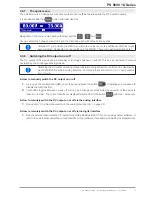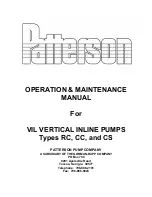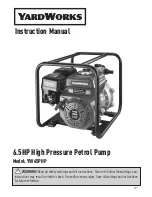
22
PS 9000 1U Series
© 2015 Intepro Systems, LP. Specifications subject to change without notice.
2.
Installation & commissioning
2.1
Transport and storage
2.1.1 Transport
•
The handles on the frontside of the device are
not
for carrying!
•
Do not transport when switched on or connected!
•
When relocating the equipment use of the original packing is recommended
•
The device should always be carried and mounted horizontally
•
Use suitable safety clothing, especially safety shoes, when carrying the equipment, as due to
its weight a fall can have serious consequences.
2.1.2 Packaging
It is recommended to keep the complete transport packaging for the lifetime of the device for relocation or return
to Intepro Systems for repair. Otherwise the packaging should be disposed of in an environmentally friendly way.
2.1.3 Storage
In case of long term storage of the equipment it is recommended to use the original packaging or similar. Storage
must be in dry rooms, if possible in sealed packaging, to avoid internal corrosion from humidity.
2.2
Unpacking and visual check
After every transport, with or without packaging, or before commissioning, the equipment should be visually
inspected for damage and completeness using the delivery note and/or parts list (see section
“1.9.3. Scope of
delivery”
). An obviously damaged device (e.g. loose parts inside, damage outside) must under no circumstances
be put in operation.
2.3
Installation
2.3.1 Safety procedures before installation and use
•
When using a 19” rack, rails suitable for the width of the housing and the weight of the device
should be used. (see
“1.8.3. Specific technical data”
)
•
Before connecting to the mains ensure that the connection is as shown on the product label.
Overvoltage on the AC supply can cause equipment damage.
2.3.2 Preparation
Mains connection for a PS 9000 1U series device is done via the included 2-meters long 3-pole mains cord. If a
different AC wiring is required, make sure that the other cable has a minimum cross section of 1.5 mm² (AWG 12).
Dimensioning of the DC wiring to the load/consumer has to reflect the following:
•
The cable cross section should always be specified for at least the maximum current of the
device.
•
Continuous operation at the approved limit generates heat which must be removed, as well as
voltage loss which depends on cable length and heating. To compensate for these the cable
cross section should be increased and the cable length reduced.
Summary of Contents for PS 9080-100 1U
Page 2: ......
















































